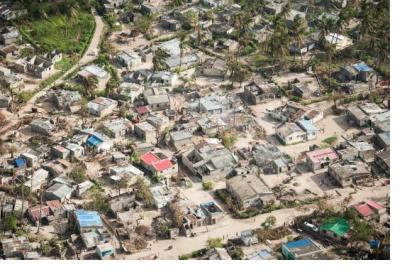A new United Nations report calls for urgent action on disaster risk reduction to protect progress towards eradication of poverty and hunger, and action on climate change. The achievement of these and other Sustainable Development Goals (SDGs) could be slowed down or even reversed if governments do not adopt appropriate strategies, the Global Assessment Report on Disaster Risk Reduction 2019 (GAR19) warns.
“The human race has never before faced such large and complex threats. The doubling of extreme weather events over the last twenty years is further evidence that we need a new approach to managing disaster risk if we are to limit disaster losses. Economic losses are making it an uphill battle to hold on to development gains in low and middle income countries,” said Ms Mami Mizutori, Special Representative of the United Nations Secretary-General (SRSG) for Disaster Risk Reduction and Head of the United Nations Office for Disaster Risk Reduction (UNDRR).
GAR19 outlines major potential risks to human life and property, including climate change, air pollution, biological hazards and drought. The world not only faces new and larger threats, but also the growing potential for one disaster to produce or exacerbate another through cascading effects, the report says.
The publication is a biennial global assessment of disaster risk reduction and comprehensive review and analysis of the natural hazards that are affecting humanity. Its latest edition was released at the Global Platform for Disaster Risk Reduction 2019 in Geneva.
The 2019 edition of the GAR underlines the pluralistic nature of risk: in multiple dimensions, at multiple scales and with multiple impacts. It highlights the complex interactions between human and natural systems, with population growth and rising consumption putting more pressure on the world’s ecosystems than ever before.
The publication also features the first update from countries on progress against the seven targets of the Sendai Framework for Disaster Risk Reduction and places special emphasis on “Target (e): Substantially increase the number of countries with national and local disaster risk reduction strategies by 2020.”
GAR19 is structured in three parts:
Part I - The Sendai Framework's broadened view of the world's risk. This section highlights how risk science is changing. Hazards interact with each other in increasingly complex ways, and our understanding of this is expanding.
Part II - Implementation of the Sendai Framework for disaster risk reduction and disaster risk-informed sustainable development. This part introduces the global disaster risk landscape with an emphasis on the globally agreed goals and targets of the Sendai Framework and the 2030 Agenda. It takes stock of experiences so far, with a comparative analysis of country-specific evidence on national reporting.
- Part III - Creating the national and local conditions to manage risk. This part discusses the enabling environment for Member States to develop and effectively implement national and local plans and strategies, including the technical support systems and resources available around the Sendai Framework and the other post-2015 agendas.
The GAR is produced under the coordination and supervision of the UNDRR, in collaboration and consultation with a wide range of stakeholders, with thinkers, practitioners, experts and innovators to investigate the state of risk across the globe.

